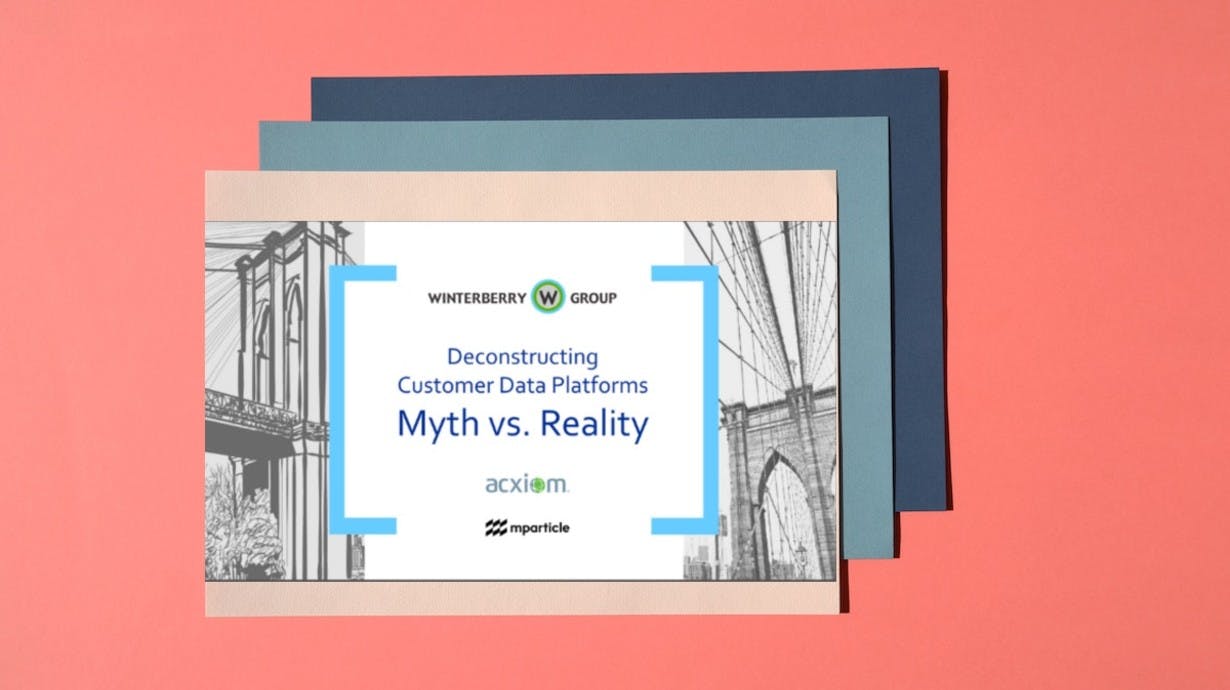New customer data platform research sets the record straight
Of the many companies calling themselves CDPs, fewer than 1 in 5 actually are one, says a new Winterberry Group report. Learn why.

This week, Winterberry Group released new research, conducted in partnership with the membership of the Association of National Advertisers (ANA), that deconstructs the current and future state of Customer Data Platforms (CDPs).
Based on feedback collected from hundreds of customer experience (CX) professionals, marketers and technology vendors, the report sheds new light on how CDPs are being used to modernize legacy database approaches—without requiring an entire rip and replace— the seven most common drivers of CDP adoption, and the core requirements surrounding each one.
For some, the most surprising finding will be this: More than 80% of companies currently classifying themselves CDPs are not, in fact, CDPs.
How can that be?
The report’s authors explain that the conventional understanding of the CDP market is too narrow in scope, since it fails to include segmentation; too broad, with vendors as diverse as tag management and customer engagement systems claiming to be CDPs; and too shallow in its technical specifications. Take, for example, integrating customer data from a multitude of sources. Essentially, any vendor can say they do it simply because they transfer flat files by brute force; however, only true CDPs do it in a deep, API-driven way.
We couldn’t agree more.
What makes a true CDP?
If you are looking for a foundational customer data solution — as CDPs purport to be — here are four things the report’s authors recommend you look for:
1. Data integration that’s right from the start.
From the report:
CDPs ingest, consolidate, and standardize customer data from a multitude of sources, with different structures, nomenclature, and identifiers. In the vein of “prevention is the best medicine,” the best time to cleanse data is before it enters your pipeline. This is why a CDP must be able to ingest data through a full spectrum of mechanisms. Broad and deep ingestion expertise is not a matter of convenience, it’s a matter of integrity. It is during this process that CDPs perform the most robust data normalization — correcting instrumentation or coding errors before they propagate downstream to other systems.
Because the most robust and reliable way of collecting these data is via native tagging at the point of origin, CDPs should offer their own SDKs rather than depend on other systems and processes to generate the data and send it via JSON (or even batch ETL) to the CDP.
2. Sophisticated identity resolution
From the report:
Traditional architectures rely on rigid identity schemes, which may suit a single application (such as email or web cookie IDs), but don�’t capture the full range of identifiers and marketing applications. Further complicating matters, identity in marketing must be highly contextual, and capable of ‘recognizing’ and ‘un-knowing’ an individual depending on the application — with different rules for serving ads versus performing analytics, for example — the individual’s stated preferences, the business’s own strategy, and the regulatory context.
CDPs maintain individual customer history over time, regardless of how the data is maintained in source systems. This ensures profiles become richer over time as the customer continues to interact with the company. And, CDPs must enable all of this in a privacy-compliant manner — CDPs must manage profiles within the applicable privacy context and ensure that profile semantics are maintained across the various systems integrated with the CDP.
3. A segmentation engine that can power moment-based use cases.
From the report:
“When customer engagement cycles were measured in days and weeks, batch, static, or offline processing was sufficient. But, as customers have shifted to multi-device and multi-channel engagement habits, engagement cycle times have collapsed. It’s not unusual for a customer to engage via email, text, and social media, or to enter and exit a geofence in minutes. In these cases, static processing is insufficient for an optimal customer experience.”
To function in real time, a CDP requires either a modern data processing pipeline which can deploy decision-making rules to endpoints or a streaming architecture. While not every application in a marketing stack will make use of real-time data, support for real-time use cases is critical for a CDP.
4. A smart, canonical pipeline, connected to all the right places.
From the report:
Many of the applications with CDP capabilities offer a few pre-built connectors, or other partial integration methods. True CDPs integrate “out-of-the-box” with scores of other systems through connectors and APIs which allow the marketer to access the data for deeper analytics and/or to inform customer engagements. Many top CDPs we spoke with for this research offer pre-built connectors into a range of non-marketing systems too, including customer service help desks, cloud data warehouses, machine learning engines, and product analytics suites.
While vendors in adjacent categories certainly claim to offer CDP capabilities, their value as a data management solution diminishes if that data cannot be used outside of their own solution. Marketers should understand the technology, intelligence, and value of a proper connectivity layer that maintains high-quality standards and ‘translates’ data to support each of the various endpoints they might require. In some cases, data may need to be mapped to meet a vendor’s taxonomies, while in other cases, a downstream vendor may impose throttling limits. The CDP approach must be flexible enough to accommodate these and multiple other scenarios.
There is a lot more to selecting a CDP than just these four dimensions, of course. But what the Winterberry report makes clear is that not all CDPs are created equal. To learn more, download your copy of the report today.



